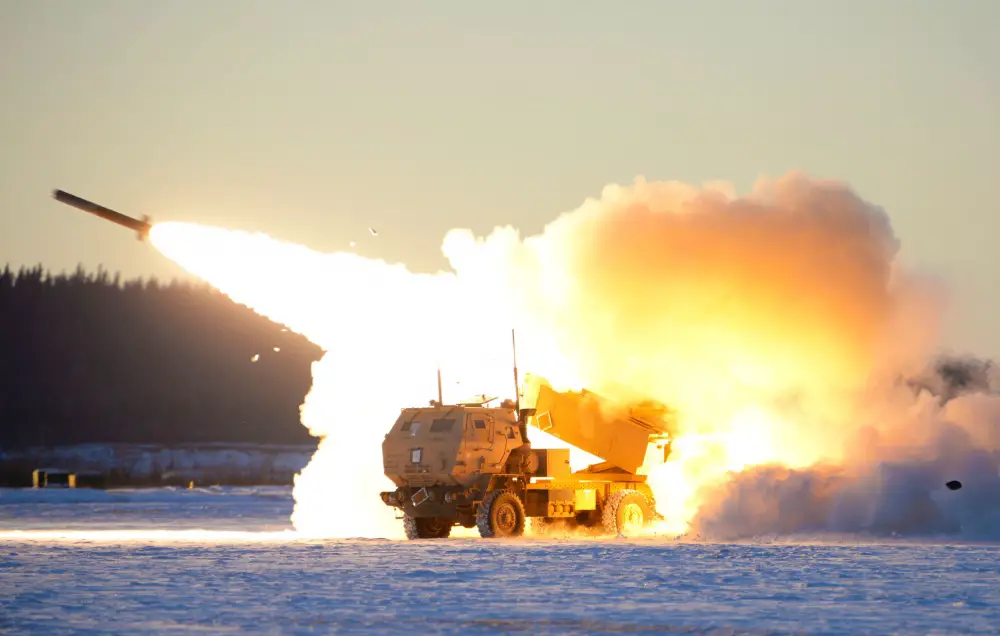The U.S. Army celebrated a field artillery milestone in October 2020, when the 500th High Mobility Artillery Rocket System rocket launcher powered out of the industry-partner’s production facility in Camden, Arkansas. HIMARS originated in the 1980s as a concept to meet the Army’s need for a lightweight Multiple Launch Rocket System. The first HIMARS mockup was fabricated in 1991 using a 5-ton Family of Medium Tactical Vehicles truck chassis, a framework that is still used today. In 1998, this prototype launcher fired several fire missions and proved the feasibility of C-130 transportability. These initial phases demonstrated to Army leadership the significant potential of the HIMARS launcher and future implementation to support the Army-at-War test philosophy. The HIMARS workforce heritage runs deep as several current teammates who still support the launchers were part of the original team and brought HIMARS to life.

By mid-1998, four launcher prototypes were designed and hand-built with three launchers fielded to the XVIII Airborne Corps’ 3rd Battalion, 27th Field Artillery Regiment, 18th Field Artillery Brigade, located at Fort Bragg, North Carolina. The unit successfully participated in the Rapid Force Projection Initiative Advanced Concept Technology Demonstration Field Experiment at Fort Benning with a two-year Extended User Evaluation effectively conducted and completed using these HIMARS prototypes. With the launchers meeting and exceeding all performance requirements, the XVIII Airborne Corps requested to retain the systems until the next generation production launchers were deployed to the 3rd Battalion, 27th Field Artillery Regiment, in June 2005.

Production ramped down in 2013, then shifted into high gear in 2018 when the Fiscal Year Report to Congress identified a near-term platform fielding expansion of HIMARS was necessary to sufficiently meet the Joint Force’s demand and combat near-peer adversaries. Currently, new launchers are in full rate production and rolling off the production line in Camden. Foreign Military Sales launchers are currently being delivered with U.S. launchers to arrive next year. The reset team at Red River Army Depot, Texas, and the overhaul team at Letterkenny Army Depot, Pennsylvania, keeps the existing fleet of launchers in top form. Due to new sub-vendors fabricating and welding the crew cabs, a successful live fire was recently conducted at Aberdeen Proving Grounds, Maryland. HIMARS went on to successfully serve in combat for Operation Iraqi Freedom in support of Coalition Forces and Operation Enduring Freedom.

HIMARS stands as a combat-proven mainstay in the Army’s fleet of launchers and supports one of the U.S. Army’s top modernization priorities – Long Range Precision Fires. The rocket launcher provides close- and long-range precision rocket and missile fire support for joint forces, early-entry expeditionary forces, contingency forces and field artillery brigades supporting brigade combat teams. Showcasing its strength and lethal payload, HIMARS is deployed in theatres worldwide. Currently, 363 HIMARS serve with Army units, 47 are fielded with the U.S. Marine Corps, and by January 2021, a total of 118 HIMARS launchers will integrate into many international partners’ military forces. Extensive hardware improvements include the Increased Crew Protection cab which meets the survivability requirement for ground combat vehicles and provides Soldiers who are operating in theater the necessary protection against Improvised Explosive Devices.

While the launcher still asserts much of its legacy wheeled design, HIMARS has evolved to remain an overwhelming force on the battlefield. To enhance user interface, ensure safe execution of fire missions and provide commonality among launcher systems, HIMARS has been equipped with substantial software and hardware upgrades over the last several years. Modernized government owned, tested and fielded launcher software now enables new munition capabilities for the Warfighter. The Universal Fire Control System conducts all existing and future fire missions of the MLRS Family of Munitions such as the Army Tactical Missile System, Guided Multiple Launch Rocket System and most recently, the Precision Strike Missile. Presently, STORM Project Office is spearheading the fire control system’s next iteration, the Common Fire Control System, which will overcome obsolescence and offer commonality between both the HIMARS and MLRS launchers.
















